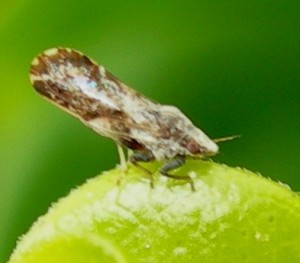Author's posts
Sep 19
Pest of the Month August 2012 – Asian Citrus Psyllid
Hosts: Restricted to Citrus and closely related Rutaceae, such as mock orange Distribution: Hawaiian Islands – Hawaii, Maui, Oahu, Kauai, Molokai, and Lanai. Other U.S. – Florida, Texas, Louisiana, Alabama, Georgia, Mississippi, South Carolina, California, Puerto Rico, andGuam. Also found in southeast Asia, South America, Middle East, and the Caribbean Damage: Stunting and twisting of …
Sep 19
Pest of the Month July 2012 – Plumeria Stem Borer (Lagocheirus undatus)
i) Hosts: Plumeria spp. ii) Symptoms: Small hole(s) in the side of the stem with black ooze dripping out, shriveled stems iii) Control: Prune the affected branch from the plant and destroy completely. Insecticides are ineffective. References: Plumeria, University of Hawaii at Manoa, College of Tropical Agriculture and Human Resources, Cooperative Extension Service, Ornamental Flowers …
Jul 02
Pest of the Month June 2012 – Laurel Wilt
Fungus: Raffaelea lauricola Hosts: avocado, camphor (Lauraceae family) Distribution: Florida, Georgia, and South Carolina Symptoms: Infects the sapwood, restricting the flow of water and causing the leaves to wilt. Wilted trees may exhibit small dowels or “toothpicks” of sawdust protruding from the stem produced by the ambrosia beetles as they bore into the wood Vector: …
Jul 02
Pest of the Month May 2012 – Asian Long-Horned Beetle (Pest Alert)
Hosts: hardwood trees (primarily genera Acer, Populus, Salix, and Ulmus, but also Aesculus, Albizia, Betula, Cercidiphyllum, Fraxinus, Platanus, Prunus, and Sorbus). Acer is the most common. Distribution: Native to China and Korea. First discovered in the U.S.in 1996. Has been found in New York, Calfornia, Washington State, Illinois, and New Jersey. Symptoms: Dead trees due …
Jul 02
Pest of the Month April 2012 – Hibiscus Erineum Mite
Hosts: Hibiscus spp., particularly the Chinese red hibiscus Distribution: Hawaii- all of the major islands; Tonga, Fiji, and other Pacific areas; Australia Damage: (1) Unsightly leaf, stem, and twig galls Management: (1) Biological control – predatory mites (2) Cultural control – consider replacing with another type of hibiscus less susceptible or with another type of plant. (3) …
Jul 02
Pest of the Month March 2012 – South American Palm Weevil
Hosts: Coconut, sago palm, Canary Island date palm, date palm, sugarcane, papaya, citrus, mango, guava, Fosberg breadfruit, banana, avocado, cocoa, and many others Distribution: South America, Mexico, Caribbean. It has been found in California and Texas but does not appear to be well-established. Description: Large, black weevil 1.3” long and 0.6” wide. Shiny when it …
Jul 02
Pest of the Month February 2012 – Fiorinia phantasma
Hosts: Most commonly palms (coconut, Manila, areca, foxtail, and bottle palms) as well as kamani, shower tree, Ficus benjamina, maio, Madagascar olive, hala, mock orange, wax leaf privet, and traveler’s palm Distribution: Philippines, Oahu, and Kihei/Wailea area of Maui Description: Armored scale. Adult females inconsistently show red stripes the width of the scale covering with …
Jun 30
Pest of the Month January 2012 – Bacterial Leaf Spot of Hibiscus
Host: Hibiscus and others, most commonly Hibiscus rosa-sinensis L. Distribution: Particularly in high rainfall areas like Kurtistown on the Big Island Symptoms: Lesions from 2-10 mmin diameter, usually surrounded by a two-color border (black next to tan-colored necrotic center and purplish-red next to the black) Dispersion: Primarily by splashing or windblown rain. Infects through wounds …
Jun 30
Pest of the Month November 2011 – Sugarcane Weevil
Hosts: Sugarcane, palms (coconut, betelnut), papaya Distribution: Most of Micronesia and Hawaii. Native to New Guinea. Symptoms: Tunnels in the interior of the stem. The entrance is usually plugged with plant fibers. In coconuts, the stem is weakened to the point of palm failure in high winds. In betelnut, the weevils frequently bore near the …
Jun 30
Pest of the Month October 2011 – Ohia Psyllid
Ohia Psyllid (several native Hawaiian species of the Family Psyllidae) Host: Ohia Distribution: Native to Hawaii Symptoms: Circular, conical, or convex galls on leaves, particularly new growth Management: Biological control by other native species (Sympiesis sp.) Because the ohia psyllids are native insects, avoid the use of pesticides as they or their parasites could become …



